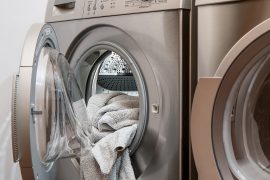If you’re renovating your landscape or building a new house, you’ll have to select whether you want a natural or artificial lawn. Comparing the benefits and drawbacks of artificial grass can help you decide which is the best option for your lawn based on your needs and budget. Learn about artificial grass, its pros and downsides, and some things to think about before deciding whether artificial turf is the perfect choice for you.
What exactly is fake grass?
Fake grass, aka artificial grass or astroturf, is made up of plastic components that resemble living grass and is used to cover a yard’s surface. When compared to the original AstroTurf of the 1960s, synthetic grass seems remarkably lifelike and may produce the wonderful vivid, lush lawn that many homeowners prefer no matter the season.
Advantages
Since its inception in the 1960s, synthetic grass has come a long way. It’s now possible to install artificial grass that doesn’t seem faux. With increased knowledge of the environmental effect and health risks involved with the fertilisers and pesticides that traditional natural turf lawns require, it’s simple to see why more people are open to the concept of replacing their turf grass with synthetic grass.
The following are some of the advantages of artificial grass –
- All-year-round appeal.
- There is no need to water.
- To maintain synthetic turf looking excellent, no pesticides or fertilisers are required.
- There will be no cutting, mowing, or trimming of the grass.
- There are no problems with “growing” in the shadow, patchy places from wear and tear, or pest damage.
- Elements that are beneficial to the environment include the fact that it does not require any water and that some artificial turf can be manufactured from recyclable materials.
- It is simple to install.
Drawbacks
While artificial turf has its benefits, it also has some significant drawbacks to consider when selecting the best type of lawn for your home or property, including the following:
- Installation fees for plastic turf fields can be rather significant.
- Every few years, the infill material and antishock layer must be replaced.
- Some substances have the potential to harm humans or the environment.
- The surface heats up to 30 degrees warmer than the atmospheric temperature.
- Artificial turfs are more abrasive than natural grass, which can produce rug burn.
Is fake grass the best option for you?
Outdoor BBQs and kids playing soccer in front of our house are starting to find their way into our daydreams as we are in the summer months. Outside, though, the muddy weed patch is not exactly how many of us picture spending our time. Although artificial grass is not cheap, it may be installed rapidly. It is a terrific alternative to natural grass, but it isn’t for everyone. When deciding whether it’s a suitable fit for your home, think about where it’s located, your budget, and some of the benefits and drawbacks.





